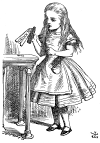Whelp
Ouch.
Dear Word Detective: When I moved to Virginia, and now that I live in South Carolina, I have noticed the misuse of the word “whelp” in place of “welt.” It took all I could do not to laugh the first time I heard it. They did not want to believe me when I told them what “whelp” meant. Later, the weather turned cold and the word “toboggan” came up and, well, I couldn’t not laugh that time! — Mary LeBrun.
“Whelp” for “welt,” eh? Odd. So if someone were to slap someone on the shoulder really hard, for instance, puppies would appear? That could be inconvenient. Almost as inconvenient as stepping outside your door every day and finding a new litter of kittens wearing tiny “Feed Me!” signs around their necks staring up at you. That actually happened (minus the signs, of course) several times after we moved to the country years ago. Eventually I wised up and quit going outside. Ever. We do have windows, after all. Of course, you can’t really see out because they’re blocked by forty-two morbidly obese cats.
Where was I? Oh yeah, “whelp” being used to mean “welt.” Well, the words do sound alike, differing in speech only in their final consonants. Sense-wise, of course, they are, to paraphrase Mark Twain, as different as a lightning bug and lightning.
“Welt” first appeared in English in the 15th century as a shoemaker’s term. The “welt” in a shoe is a strip of leather sewn between the sole of the shoe and the “upper” (the body of the shoe itself). The origin of the word is uncertain, but it may be related to the Old Norse “velta,” meaning “to roll.” “Welt” went on to acquire a variety of other meanings generally involving a “strip,” “band” or “ridge” of something, such as a border on a piece of fabric. Around 1800, “welt” began to be used to mean a ridge on the flesh, either as would be caused by striking with a whip, etc., or a scar from such an injury. This “raised red mark” sense is the most common use of “welt” today outside of shoe catalogs.
“Whelp” is a much, much older word, so old (it appeared in Old English as “hwelp”) that we have no real clue as to its origin. It appears to be from Germanic roots and has relatives in Old Norse, Dutch and German. A “whelp” is simply the young of a dog, i.e., a puppy, and for a female dog to be “with whelp” is to be pregnant with puppies. As the common term for a baby dog today, “whelp” has been almost entirely replaced by “puppy,” which appeared in the 15th century (from the Middle French “poupee,” doll or toy, related to “puppet”). But “whelp” is still used in figurative or jocular senses to mean the offspring of other animals, including humans (“I and my gardener George, and my little whelp Maurice and Dandy, Went out this afternoon fishing,” 1850).
As it happens, the substitution of “whelp” for “welt” is well-documented in colloquial speech of the Southern US, and has been since the late 19th century (“His leg was swollen and had three whelps on the calf. In one of them the skin was broken and appeared to be irritated … had a bluish, reddish look,” 1895). In fact, it’s not just “whelp” that’s a frequent stand-in for “welt.” “Whelk,” which to most of us means a kind of large snail, is also frequently used where one might expect to see “welt” (“They [rattlesnakes] hurt like fury, but their tails ain’t pisen. Look what a whelk they made on the hoss,” 1856). “Whelk” is also used in the South to mean “a pimple or pustule,” which might, in a stretch, be likened to a small snail in appearance, but it’s most often used as a simple synonym for “welt.”
Page 1 of 2 | Next page
